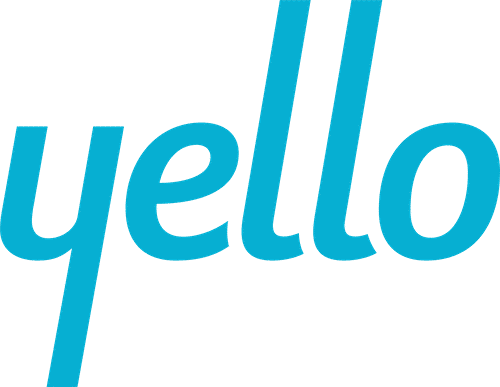What is the best way to hire high-quality candidates? Is it cultivating your employer brand? Providing competitive salaries? How about facilitating a positive interview experience? While all are important, research indicates one of the most significant factors in the hiring process is speed.
The 2017 Yello Recruiting Study* found that 74 percent of recent grads turned down an opportunity because of a delay in receiving the offer. While it’s no surprise that talent doesn’t want to wait around for a decision, organizations may still make mistakes that drag out time-to-hire. Scott Wintrip, the author of “High Velocity Hiring: How to Hire Top Talent in an Instant,” outlines three mistakes companies often make that slow hiring, and cause candidates to turn down the offer.
Mistake 1: Your Talent Pool is Too Small
Do you cast a wide net when searching for candidates, or is the pool too small? “If you asked employers why they can’t fill jobs, more than a third will tell you they’re not getting enough applicants, or they’re getting no applicants at all. Yet, only 10 percent of these employers leverage untapped talent pools,” says Wintrip.
Faster hiring requires volume; employers can expand the candidate pool by targeting:
- Silver medalists: Using recruiting software, search the candidate database for silver medal candidates — candidates who made it to the final stage of the hiring process, but ultimately weren’t hired. Silver medalists can be top contenders for open positions, and may move through the hiring process faster as they’re already familiar with your company.
- Former employees: Former employees, or potential boomerang hires, have a proven track record with your organization, and understand company culture and mission. Encourage hiring managers who have a relationship with former employees to reach out when the right role becomes available.
- Employee referrals: Don’t limit your focus to referral candidates for a particular role. Consider candidates who were referred previously for other positions. Their skills could be relevant for the job you need to fill.
Mistake 2: Employing Slow and Inaccurate Interviewing Methods
Interview methods may not be an obvious cause of a slow hiring process, but if the interview doesn’t provide insight into the candidate’s qualifications, it can result in the need for additional meetings, and ultimately, prolong hiring.
According to Wintrip, candidates are on their best behavior during interviews and may research ways to beat common interview questions. This can make it difficult to determine who will succeed and who will fail in a role. He asserts that to speed up hiring, organizations must interview more accurately. “[The interview] must allow you to see proof then and there that a candidate can do the job,” he says.
To quickly determine if a candidate is a good fit and speed the hiring process:
- Incorporate skills testing: Every role has a core set of skills. Instead of asking questions about previous roles, give candidates the opportunity to present these skills. For a sales role, set up a mock sales call or for a marketing role, ask the candidate to present a creative campaign idea. Skills testing can provide a real-life example of how a candidate would perform the job.
- Refine questions: Don’t risk receiving the perfect canned response from a candidate. Ask these seven interview questions for a higher-quality candidate meeting.
- Streamline scheduling: If additional interviews can’t be avoided, use interview scheduling software to reduce time spent coordinating interview logistics. Schedule interviews in real-time, let candidates schedule and reschedule from any device and decrease time-consuming, back-and-forth communications.
Mistake 3: Failing to Build a Prospective Employee Pipeline
When a position opens suddenly, it can feel overwhelming as managers handle extra work from the departing employee and the talent acquisition team kicks into high-gear to fill the position. “Without an active talent pipeline, a frantic dance ensues,” says Wintrip.
The chaos and disorganization of unexpected requisitions can lead to a prolonged hiring timeline. Eliminate the chaos and hire quickly by cultivating a talent pipeline. When recruiters have a robust pipeline at their fingertips, “there’s no rush, panic or chaos [when a position opens]. Instead, you can hire from your overflowing pipeline.”
To cut down on time-to-hire and grow your talent pipeline:
- Host and attend networking events: Networking events can be valuable opportunities to meet candidates who could qualify for future positions. Partner with an engineer at the company to attend an engineering meet-up, or a sales manager to go to a sales event. Your company can also host events to provide potential employees an introduction to your organization. Host a lunch or happy hour and encourage every employee to bring a friend. Capture interested candidates’ information using mobile recruiting apps to reach out in the future.
- Develop your talent community: A talent community can help you stay in touch with prospective employees, while building your talent pipeline. Make it easy for potential candidates to join your talent community through a short form on your careers site, and create a communication strategy to communicate with this group regularly, ensuring candidates are familiar with your company before a job is available.
Speedy hiring is essential to landing top candidates. Evaluate your talent acquisition process for these common mistakes to cut down on time-to-hire and increase accepted offers. Talent acquisition teams can also read “High Velocity Hiring: How to Hire Top Talent” for additional tips to hire quickly.
Need to build up your talent pipeline and reduce time-to-hire? Find out out how talent acquisition software can help.
About Scott Wintrip: Scott Wintrip has changed how thousands of companies across the globe find and select employees, helping design and implement a process to hire top talent in less than an hour. Over the past 18 years, he built the Wintrip Consulting Group, a thriving global consultancy.
*In February 2017, Yello surveyed 1,461 collegiate or recently post-collegiate students on their interviewing and hiring experiences. All individuals were either currently employed or had accepted full-time or internship offers.



